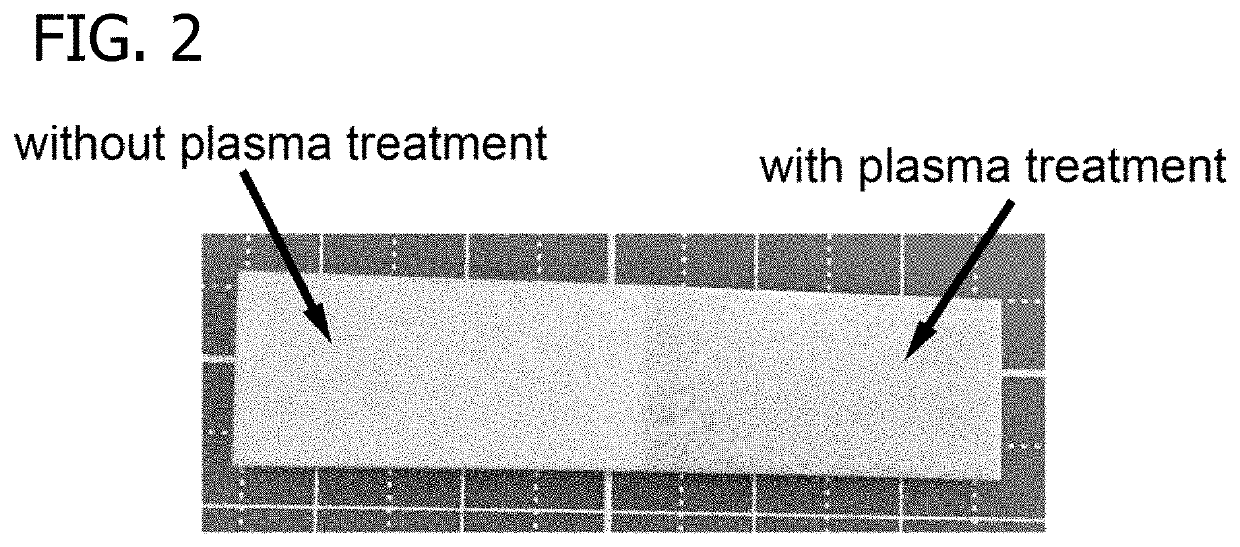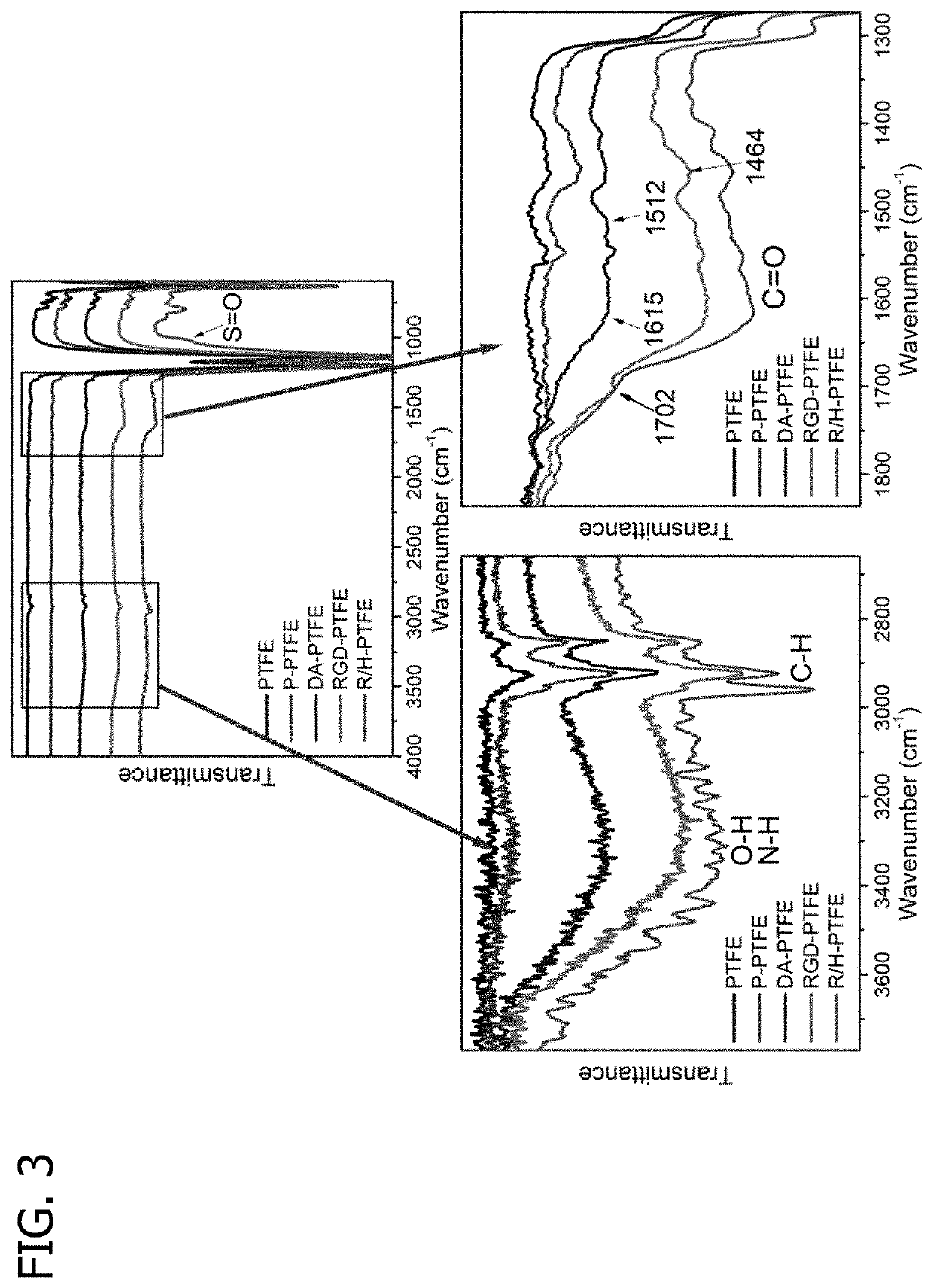Promoting endothelial cell affinity and antithrombogenicity of polytetrafluoroethylene (PTFE) by mussel-inspired modification and rgd/heparin grafting
a polytetrafluoroethylene and endothelial cell technology, applied in the field of tissue engineering, can solve the problems of inferior endothelial cell affinity, slow endothelialization rate, and high risk of thrombosis, and achieve the effect of promoting cell affinity and reducing thrombosis of synthetic biomaterials
- Summary
- Abstract
- Description
- Claims
- Application Information
AI Technical Summary
Benefits of technology
Problems solved by technology
Method used
Image
Examples
examples
[0061]Materials and Methods
[0062]Medical-grade PTFE sheets with a thickness of 1 mm were purchased from Scientific Commodities Inc. All other chemicals were purchased from Sigma-Aldrich and used as received. DI water was used throughout the experiment.
[0063]PTFE Modification
[0064]PTFE sheets were first cleaned by ultrasonication in a 20% ethanol solution for 30 minutes. The PTFE sheets were then treated with oxygen plasma to enhance their surface hydrophobicity via a plasma etcher (PlasmaEtch PE-200) at an RF power of 200 W for 30 minutes at an oxygen flow rate of 20 cm3 / min. The plasma-treated PTFE sheet was named P-PTFE. P-PTFE was further coated with dopamine (DA) by immersing it into a 2 mg / mL dopamine solution with a pH of 8.5 adjusted by 10 mM tris(hydroxymethyl)aminomethane for 16 hours at room temperature. After coating, samples were rinsed with DI water 5 times and dried with nitrogen. Dopamine-coated P-PTFE sheets were named DA-PTFE. To further enhance the surface biocompa...
PUM
| Property | Measurement | Unit |
|---|---|---|
| Density | aaaaa | aaaaa |
| Density | aaaaa | aaaaa |
| Fraction | aaaaa | aaaaa |
Abstract
Description
Claims
Application Information
 Login to View More
Login to View More - R&D
- Intellectual Property
- Life Sciences
- Materials
- Tech Scout
- Unparalleled Data Quality
- Higher Quality Content
- 60% Fewer Hallucinations
Browse by: Latest US Patents, China's latest patents, Technical Efficacy Thesaurus, Application Domain, Technology Topic, Popular Technical Reports.
© 2025 PatSnap. All rights reserved.Legal|Privacy policy|Modern Slavery Act Transparency Statement|Sitemap|About US| Contact US: help@patsnap.com



